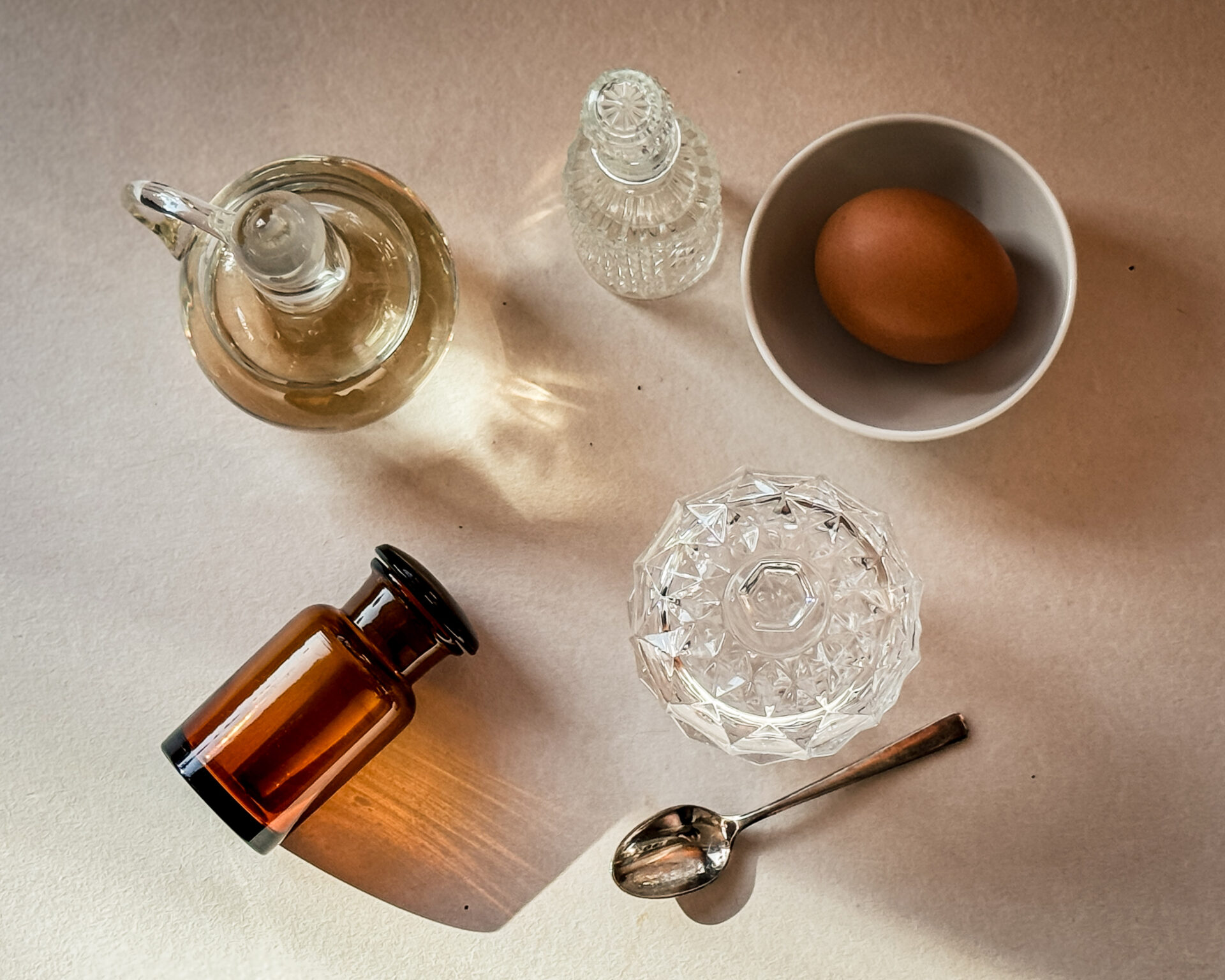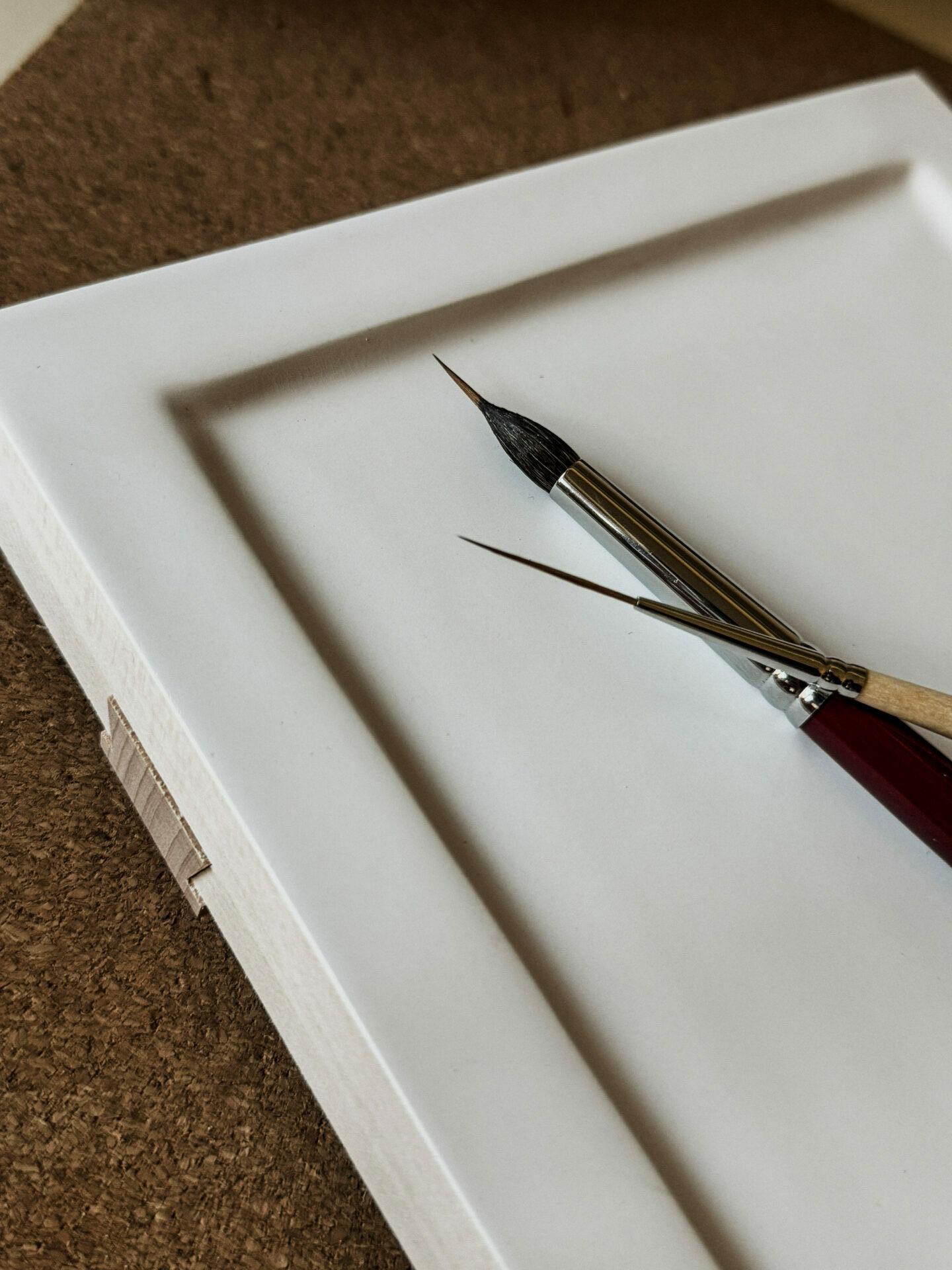
I often receive questions about the process of creating an icon. Does it require special skills? How is an icon made from start to finish? Today, I will take you through each stage of this extraordinary process.
.
The most important step.
.
Icon painting is a field of art in which the state of the artist while working is particularly important. Before starting work, I always try to calm down. Prayer, reading inspiring texts and reflecting on the figure I will be depicting are crucial for me.
Creating an icon requires not only technique, but above all inner attentiveness. The energy with which we perform the various stages of work permeates the work and remains in it forever. If the iconographer is focused, full of peace and prayer, the icon emanates harmony and light. If he creates in haste, distraction or frustration – this too will somehow be recorded in it.
However, this principle applies not only to sacred art. In every area of life, the things we do with intention, heart, and awareness yield different results than those done mechanically, without true engagement. The way we approach our daily tasks—how we speak, work, and interact with the world—shapes not only what we create but also who we become. Thus, creating an icon teaches us something much deeper: that life itself is an act of creation, and our attentiveness and love give it meaning.
.
Selection and preparation of the board-a stable foundation for the icon.
.
Unlike paintings on canvas, traditional icons are painted on wooden panels. In Poland, pine and linden wood are the most commonly used because they are lightweight, durable, and widely available. Wooden crossbars (sponges) are often added to the back of the panel to prevent warping.
A properly dried board is first coated with a low-percentage glue solution. Then, I apply a thin layer of cotton fabric or gauze, which reinforces the surface. After that, I apply several layers of gesso (levkas)—a mixture of water, chalk, and animal glue (e.g., rabbit-skin glue). Levkas creates an exceptionally smooth, white surface, which allows the paint to adhere properly and ensures that the colors remain luminous. The white background also symbolizes the pure intentions of the artist.
Once dry, the levkas is carefully sanded using fine-grain sandpaper until it becomes perfectly smooth.
.
Sketch and transfer drawing-first outlines of the icon.
.
With the surface prepared, I begin sketching on paper. In iconography, nothing is accidental—every line, gesture, and proportion holds meaning. I use a fine pencil to precisely outline the composition. At this stage, the most important thing is capturing not only the visible form but also the invisible space—the sacred presence that will soon emerge from the icon.
Once the drawing is complete, I transfer it onto the panel using special tracing paper and a pencil. There are several ways to transfer an image to the board. Some iconographers use rubbed pigment or charcoal, others prefer engraving tools (stylus). Some artists draw directly onto the board, but I wouldn’t recommend this for beginners.
.
Gilding – a symbol of divine light.
.
One of the most beautiful stages of icon creation is gilding. While it is not mandatory, many traditional icons feature no gold at all or use other metals, such as silver or copper. However, gold carries profound symbolism—it is a metal that does not corrode, has been valued worldwide for its rarity and brilliance, and in iconography, it represents God’s eternal light.
Today there are many gilding techniques, and the art itself requires a lot of knowledge and skill. In my icons, I usually use oil miction or pulment. Working with miction is easier, but it limits the appearance of gold in the final result. Gilding with pulment is very difficult, but it allows you to achieve various degrees of gold polish-from matte to high gloss. In the second case, I apply several coats of bolus – red clay mixed with glue, which helps the gold adhere to the surface. Then I moisten the surface with alcohol and carefully apply the gold flakes. The next step is to polish the gold with agate until it begins to shine. This is the moment when the icon begins to acquire its sacred luster. Anyone who has tried gilding knows how fragile and capricious gold is – sometimes all it takes is a careless breath to blow off a piece of it. But it is in this fragility that the magic of gilding lies.
.
Preparation of paint – egg tempera and the secret of pigments.
.
Traditional iconography uses egg tempera, a technique that gives colors extraordinary durability—a well-crafted icon can last for centuries. To prepare the paint, I use:
- Egg emulsion – A mixture of egg yolk, a small amount of wine or beer, and a drop of vinegar or clove oil, which prevents quick spoilage.
- Water – To dilute the mixture and regulate the consistency.
- Pigments – Natural minerals, metal oxides, or powdered gemstones (e.g., lapis lazuli for deep blue).
Before use, pigments must be finely ground in a mortar or on a glass plate using a muller. This process ensures that the color particles are fine and uniform, allowing the paint to spread smoothly and adhere properly to the surface.
Unlike oil paints, egg tempera dries very quickly, requiring precision and quick execution. Once dry, the layers become matte and velvety, and the intensity of colors depends on the number of applied layers. Layering is crucial—each paint layer is semi-transparent, allowing for a gradual build-up of light and depth.
.
Applying layers of paint – from darkness to light.
.
In icons, one paints according to the principle: from darkness to light. This means that the painting process begins with deep, dark underpaintings, which are gradually lightened with successive, increasingly lighter layers of paint. Thanks to this method, the painting acquires depth, luminosity and a characteristic spiritual aura, which makes the figures seem to radiate an inner light.
This is a beautiful symbolism – the icon is “born” from the light, just as man emerges from the darkness of sin and gradually matures to be an emanation of God’s presence. The icon does not depict a realistically illuminated scene, but shows holiness – a divinized reality that is not subject to the laws of earthly light.
Icons do not use a single light source, and shading techniques (chiaroscuro) are not applied. Every element is meant to radiate an internal, divine glow rather than reflect external lighting.
I start painting by covering all surfaces with color. The white ground color is very bright and can distort the perception of other shades. Then I proceed to develop the subsequent elements of the icon – the background, the vestments. At the very end I model the face of the saint with light.
...
Final details – inscriptions and varnish.
.
The icon is incomplete without inscriptions – inscriptions that identify the holy figures. D they are applied at the final stage of the work, after the layers of painting have dried; but before varnishing. Typically, thin brushes with very fine bristles are used for this – preferably sable or synthetic bristles, which allow control over fine lines.
Inscriptions must be harmoniously integrated into the icon’s composition and must not disturb the balance of the image. They are most often placed at the top of the icon or near the heads of the saints, in the form of abbreviated names in Greek, Orthodox Slavonic or Latin.
Securing the icon is a crucial final step, but it requires patience. Traditionally, varnishing an icon can be done only after the tempera paint has completely dried, which can take from several weeks to several months, depending on the environmental conditions. In the past, the rule of thumb was that an icon should “mature” for at least 6 months before securing, as the natural pigments and egg binder reach their full stability over time.
In traditional iconography, olipha, a special mixture of linseed oil and resin, was used to protect icons and applied to the painting surface. The olipha penetrated the layers of tempera, saturated the colors and gave them a slight transparency, bringing out the depth of the colors. However, this method had its drawbacks – if the olipha was improperly prepared or applied in too large a quantity, the icon could turn yellow and its surface would remain sticky for a long time.
Nowadays, iconographers are increasingly using synthetic matte, semi-matte or glossy varnishes, which provide protection from moisture, dust and UV rays. Modern methods make it possible to protect an icon even after a few weeks, but the traditional approach still recommends patience – the longer an icon matures before varnishing, the better it will retain its colors and durability over the years.
.

Icon – the art that leads to the sacred
.
For me, painting an icon is a combination of art and spirituality. Its creation is a deeply spiritual and multi-step process that requires focus, humility and precision. It is an art that teaches patience and inner harmony.
.
If you are interested in this topic, share your thoughts in the comments! And if you have questions about the icons, I’d be happy to answer them.
.

Leave A Comment